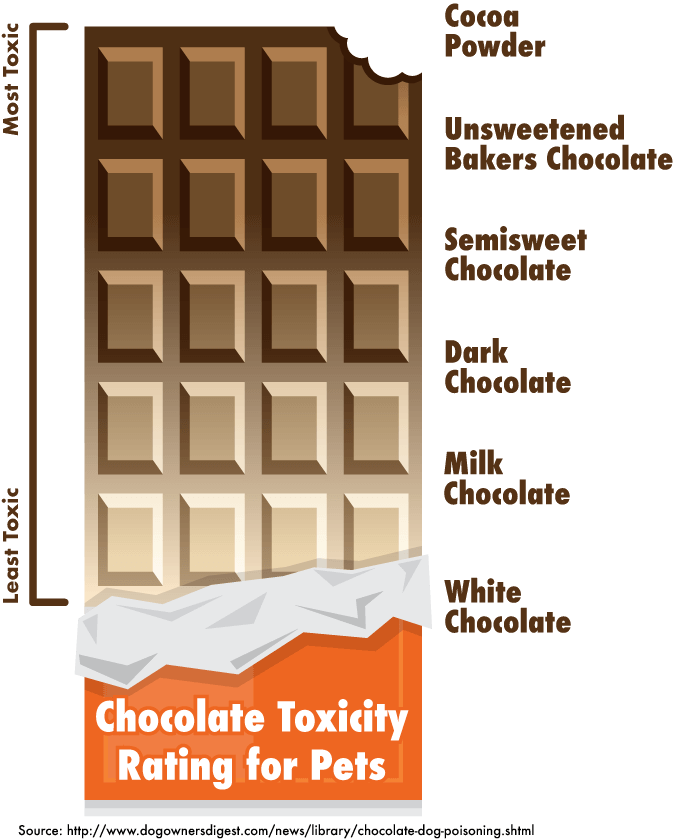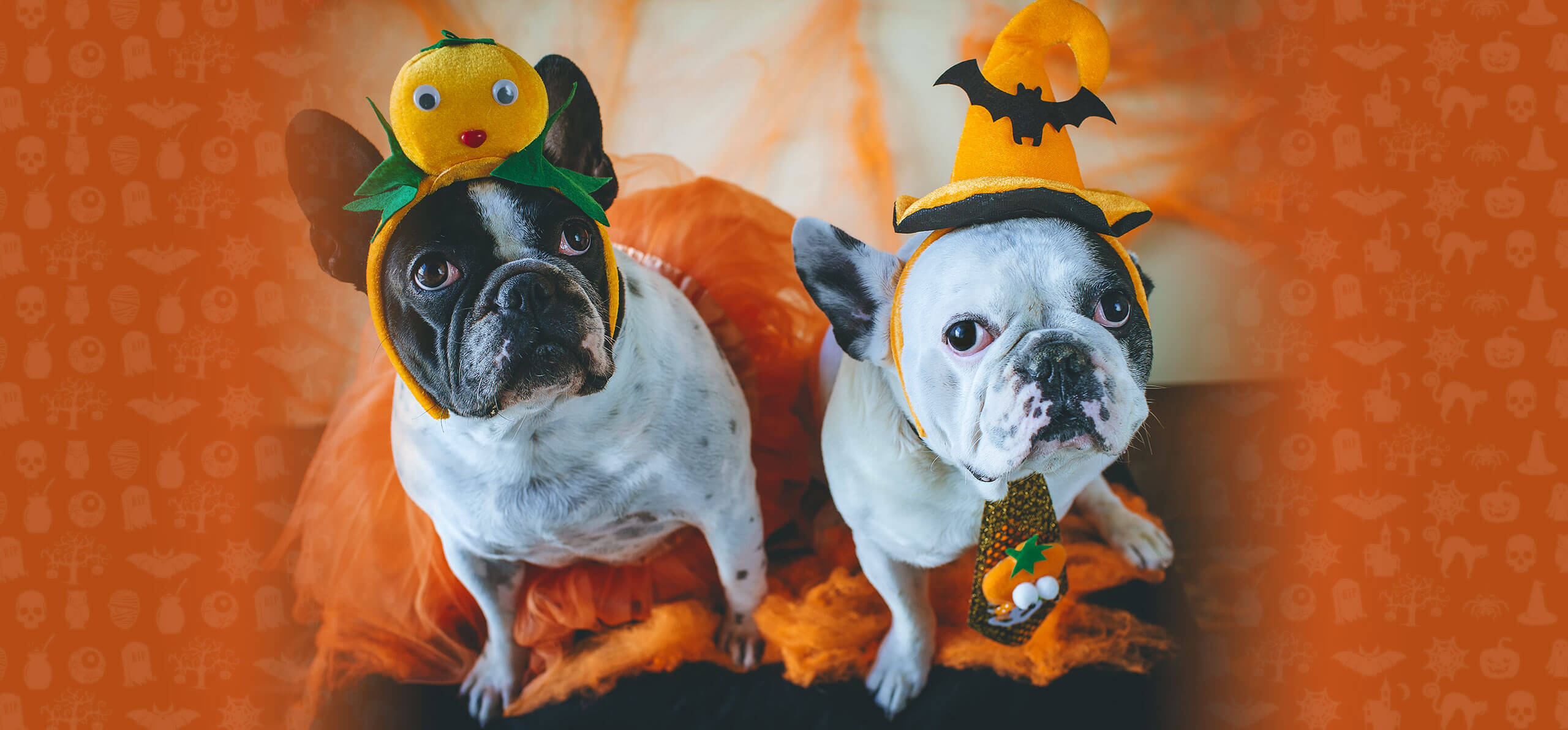Dogs are extremely sensitive to the caffeine and theobromine in chocolate. Unlike cats, who don’t normally have a sweet tooth, dogs will wolf down practically anything. They also don’t sense when their stomachs are full so they tend to overeat. This can be very dangerous considering an ounce of milk chocolate per pound of canine body weight can make dogs very ill.

Trendy dark and bitter chocolate are the most toxic because they contain more cocoa solids than milk or white chocolate.
What Can Happen When My Dog Eats Chocolate?
If you see or suspect that your dog has raided the chocolate cache, call your veterinarian immediately or the pet poison hotline: 855-764-7661.
You’ll be asked your dog’s size plus what type and quantity of chocolate they ate. Your veterinarian may want you to induce vomiting by giving your dog one tablespoon of hydrogen peroxide for every 20 pounds of his weight. Using a turkey baster or medicine dropper can make it easier to dispense the liquid. Note: only induce vomiting if advised by your veterinarian.
Toxicity symptoms can take six to 12 hours to appear and include:
• Extreme Thirst
• Diarrhea/Vomiting
• Hyperactive/Pacing
• Panting
• Shaking/Seizures
Don’t wait for signs of chocolate poisoning to show before calling your veterinarian. Symptoms can last up to 72 hours, so it’s imperative your dog gets treated early.
What Other Sweets Are Unsafe for Pets?
Sugar-free candies and gums contain xylitol, an artificial sweetener that’s extremely toxic for dogs and cats, often dropping their blood sugar within minutes after consumption. Pets can become lethargic, unable to walk and might even have seizures. If not treated as early as possible, liver damage and/or failure can occur.
Candy corn and other high-fructose sweets are mostly made of sugar and can give your pet severe gas and diarrhea.
Chocolate covered raisins are doubly troubling because they combine the toxicity of chocolate with dried grapes. Grape products, dried or not, can even cause kidney failure.
Bite-size, hard candy and wrapped or stick candy (think lollipops) can be choking hazards or cause painful obstructions, so always stash and later trash them in pet-free zones. Like humans, there are myriad reasons why your furry family should not eat sugar.
Bottom line: Halloween candy is NOT for pets. However, you can still share the festivities with them by treating your dog or cat to tasty, nutritious treats.
Any Other Halloween Dangers Lurking?
Halloween has fast become the second most popular, highly decorated celebration. We dress up our pets even more than ourselves.
Always keep safety top of mind when planning your dog’s or cat’s costume.
The more complicated the outfit, the more your dog or cat can become entangled and possibly injured. Movable, dangling parts can easily become choking or mobility hazards.
The same rule applies when dressing your home. Keep pet safety in mind when lighting candles and stringing lights, faux cobwebs or streamers. Cats will bat anything that dangles and they love to climb, so even decorations on high shelves aren’t safe. To avoid a fire, replace lighted wax candles with flameless battery-operated ones.
Should My Pet Meet Trick-or-Treaters?
If you hand out candy or host a Halloween party in your home, watch your pet’s initial reaction to the noise and costumed revelers. If your dog or cat appears anxious, agitated or starts barking or meowing, secure your furry pal in a room that’s out of sight and sound from trick-or-treaters.
If you don’t hide your pets, keep tabs on them at all times. Curious indoor cats may try to slink out the door when all the ghouls and goblins are distracting you.
If your dog or cat joins the costume parade or escorts the kids on their candy crusade, be sure your pet is leashed and wearing an ID collar. Microchipping is also a good idea to help return dogs and cats home safely if they disappear in all the Halloween hubbub.
The season of witches, revelers and candy doesn’t have to be scary for furry family members if you arm yourself with common sense and keep your dog or cat chocolate-free. Happy Halloween!

